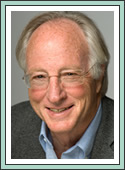|
|
|
| Kenneth Brill |
|
|
|
 |
 |
Kenneth Brill
Executive Director
The Uptime Institute, Inc.
Keynote:Uptime Institute - Revolutionizing Data Center Efficiency
[view session info]
|
|
Kenneth G. Brill is the founder and Executive Director of the Institute and the 100-corporate member Site Uptime Network. He holds an undergraduate degree in electrical engineering and an MBA from the Harvard Business School. Many industry innovations trace back to his original conceptual work; dual power and the industry's Tier system for evaluating data center design level are two examples. In 1999, recognizing that increasing heat density would become critical to IT availability, Mr. Brill worked closely with the Thermal Management Consortium to publish the first 2000-2010 Heat Density Product Trends white paper. This foundational document predicted many of the problems now facing IT executives and was updated in April 2006.
Recently, Mr. Brill has contributed to original research that shows that data centers consumed 1 percent of total US electrical power production in 2000, which grew to 2 percent by 2005, and is predicted (based on a variety of assumptions) to grow to 3-4 percent by 2010. The absolute numbers caused by this growth have raised serious questions about the adequacy of the U.S. electric supply in an era of increasing concern about carbon emissions and have caught the attention of the U.S. Congress. Public Law 109-341 signed on December 21, 2006 required that the Environmental Protection Agency (EPA) report to Congress by June of 2007 on these issues. Mr. Brill provided technical support and leadership to this process. View the EPA's Final Report to Congress as well as the formal Opinion of the Institute on the Final Report.
Mr. Brill has authored or contributed to many white papers and is a frequent commentator in the business and technology media on data center and site infrastructure design, engineering, and management issues. His current focus is on the strategic and business impacts of The Economic Meltdown of Moore's Law.
|
|
|
|
|

